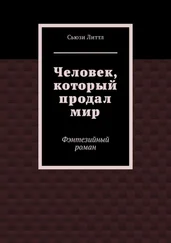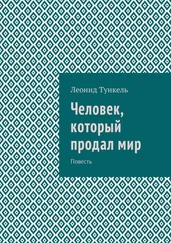Gregory G. Guzman, 'European Clerical Envoys to the Mongols: Reports of Western Merchants in Eastern Europe and Central Asia, 1231–1255,' Journal of Medieval History 22 (1996) pp. 53–67; cf also Olschki, Guillaume Boucher.
Jackson, Mongols in the West p. 70.
Sinor, Hungary p. 76.
Bezzola, Mongolen in abendlandischer Sicht pp. 110–113; Sinor, 'Les relations entre les Mongols et l'Europe jusqu'a la mort d'Arghoun et de Bela IV' Cahiers d'Histoire Mondiale 3 (1956) pp. 39–62 (at p. 47); Sinor, 'John of Carpini's Return from Mongolia: New light from a Luxembourg Manuscript, 'Journal of the Royal Asiatic Society (1957) pp. 193–206 (at pp. 203–205); A. Paloczi-Horvath, 'L'immigration et l'etablissement des Comans en Hongrie, 'Acta Orientalia Academiae Scientiarum Hungaricae 29 (1975) pp. 313–333; Berend, At the Gate pp. 134–138; Anthony Luttrell, 'The Hospitallers in Hungary before 1418: Problems and Sources,' in Hunyadi & Laszlovsky, Crusades and the Military Orders pp. 269–281 (at pp. 271–272); J. Muldoon, Popes, Lawyers and Infidels pp. 59–60.
Berend, At the Gate pp. 68–73, 87–93, 97–100.
Sinor, Hungary pp. 77–78.
Vernadsky, Mongols and Russia p. 58.
Кей-Хосров II Гийас ад-Дин, султан Рума, конийский султан. — Прим. пер .
Budge, Chronography I p. 409; Cahen, Formation of Turkey pp. 70–71; Cahen, Pre-Ottoman Turkey pp. 137–138; Miller, Trebizond pp. 24–26; Bryer, Trebizond; John Masson Smith, 'Mongol Nomadism and Middle Eastern Geography: Qishlaqs and Tumens,' in Amitai-Preiss & Morgan, Mongol Empire and its Legacy pp. 39–56; Atwood, Encyclopedia p. 555.
This theory is mainly associated with Denis Sinor. See Sinor, 'The Mongols in the West,' Journal of Asian History 33 (1999) pp. 1–44; Sinor, 'Horses and Pasture,' Oriens Extremus 19 (1972) pp. 171–183; Sinor, 'Horse and Pasturage in Inner Asian History,' in his Inner Asia and its Contacts with Medieval Europe pp. 171–184 (esp. pp. 181–183).
Greg S. Rogers, 'An Examination of Historians' Explanations for the Mongol Withdrawal from East Central Europe,' East European Quarterly 30 (1996) pp. 3–26.
Kosztolnyik, Hungary p. 182.
Rachewiltz, In the Service p. 25.
Dawson, Mongol Mission pp. 44–45.
Monumenta Germanic Historica, Scriptores 32 p. 210; Salimbene de Adam, Cronica I p. 317; Matthew Paris, Chronica Majora vi pp. 82; Dawson, Mongol Mission pp. 44–46.
Jackson, Mongols and the West p. 358; Nicol, Last Centuries p. 22.
Jackson, Mongols and the West pp. 143–147.
Dawson, Mongol Mission pp. 44–49.
Monumenta Germaniae Historica, Scriptores 17 p. 341; Matthew Paris, Chronica Majora VI p. 82.
Monumenta Germaniae Historica, Scriptores 17 p. 341; Matthew Paris, Chronica Majora VI p. 387.
JB I p. 240; II p. 588.
Mitchell & Forbes, Chronicle of Novgorod pp. 86–87.
Fennell, Crisis p. 105; Tumler, Deutsche Orden pp. 266–267; Nicolle, Peipus.
The quote is from Fennell, Crists p. 106.
Donald Ostrowski, 'Alexander Nevskii's "Battle on the Ice": The Creation of a Legend,' Russian History 33 (2006) pp. 289–312; Dittmar Dahlmann, 'Der russische Sieg fiber die "teutonischen Ritter" auf dem Peipussee 1242,' in Krumeich & Brandt, Schlachtenmythen pp. 63–75; Fennell & Stokes, Early Russian Literature pp. 107–121. The extent to which Lake Peipus has been presented as a battle to rank with Gaugamela, Zama, Alesia or Waterloo is well-nigh incredible. In Eisensteiris 1938 film, which portrays Nevsky as a peerless hero, no historical context is given. The Mongols appear, meaninglessly, in the first ten minutes, as if they were spear-carriers or extras in the drama. A great film, certainly, with wonderful music by Prokofiev, but essentially historical nonsense. Suppressio veri and suggestio falsi are used to create the impression that Nevsky saved 'Russia' (which of course did not exist at that time) from threats both east and west — Stalin's way of saying that the USSR could withstand attacks from both Hitler's Germany and Japan.
Buell, Dictionary p. 266; Jurgen Sarnowsky, 'The Teutonic Order Confronts the Mongols and Turks,' in Barber, Military Orders pp. 253–262.
Isoaho, Aleksandr Nevskiy pp. 88–98.
Dawson, Mongol Mission pp. 62, 65, 70; Fennell, Crisis pp. 98–99, 107–108, 110–120.
For Sartaq see JR II p. 1291; JB I p. 223; Jackson & Morgan, Rubruck pp. 117–119; Allsen, Mongol Imperialism pp. 136–138; Allsen, 'Mongol Census-Taking in Rus', 1245–1275,' Harvard Ukrainian Studies 5 (1981) pp. 32–53 (at p. 40); Dawson, Mongol Mission pp. 45, 65, 117–118; Jackson & Morgan, Rubruck pp. 114–122; Pelliot, Horde d'Or pp. 134–144; Spuler, Goldene Horde pp. 33–34. There was a brief interregnum in 1257 between the khanates of Sartaq and Berke when Sartaq's brother Ulaghchi reigned (Pelliot, Notes sur Marco Polo I pp. 92–95; Pelliot, Horde d'Or pp. 47–51). For Berke's conversion to Islam see Jean Richard, 'La conversion de Berke et les debuts de l'islamisation de la Horde d'Or,' Revue des Etudes Islamiques 35 (1967) pp. 173–184; Istvan Vasary, 'History and Legend in Berke Khan's conversion to Islam,' in Sinor, Aspects III pp. 230–252.
JR II p. 1149; JB I pp. 239–246.
Коден. — Прим. пер .
JB I pp. 21, 171, 176; Hambis, Le chapitre CVII; Boyle, Successors p. 181. For Koden and Shiremun see Buell, Dictionary pp. 184, 243.
Bretschneider, Mediaeval Researches I p. 332; Boyle, Successors pp. 179, 183; David Ayalon, 'The Great Yasa,' Studia Islamica 34 (1971) pp. 151–180 (at pp. 157–159, 164–165; Spuler, Mongolen in Iran p. 39.
JB I pp. 255–257; Grousset, Empire p. 271; Hodong Kim, 'A Reappraisal of Guyiik Khan,' in Amitai & Biran, Mongols, Turks and Others pp. 309–338.
Allsen, Mongol Imperialism pp. 21–22, 54–63.
JR II p. 1151; Boyle, Successors pp. 99, 180–186; Jackson, 'The Dissolution of the Mongol Empire,' Central Asiatic Journal 22 (1978) pp. 186–244 (at pp. 200–201); Atwood, Encyclopedia p. 213.
Jackson & Morgan, Rubruck pp. 46–50,163–164; Atwood, Encyclopedia p. 512.
Jackson & Morgan, Rubruck p. 169; Pelliot, 'Les Mongols et la papaute,' Revue de I'Orient chretien 24 (1924) p. 203; Aiken, Mongol Imperialism pp. 30–37.
Boyle, Successors pp. 21–22, 216; W Abramowski, 'Die chinesischen Annalen der Mongke,' Zentralasiatische Studien 13 (1979) pp. 7–71 (at pp. 20–21, 28); Morgan, Mongols pp. 103–104.
Читать дальше
Конец ознакомительного отрывка
Купить книгу

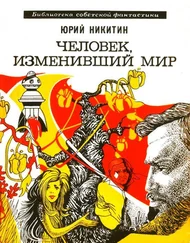

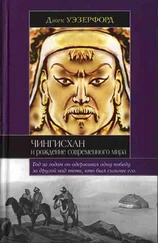
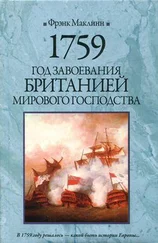

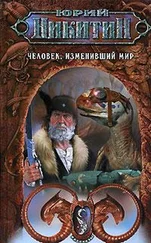
![Ксения Чепикова - Человек, научивший мир читать [История Великой информационной революции]](/books/388624/kseniya-chepikova-chelovek-nauchivshij-mir-chitat-ist-thumb.webp)
